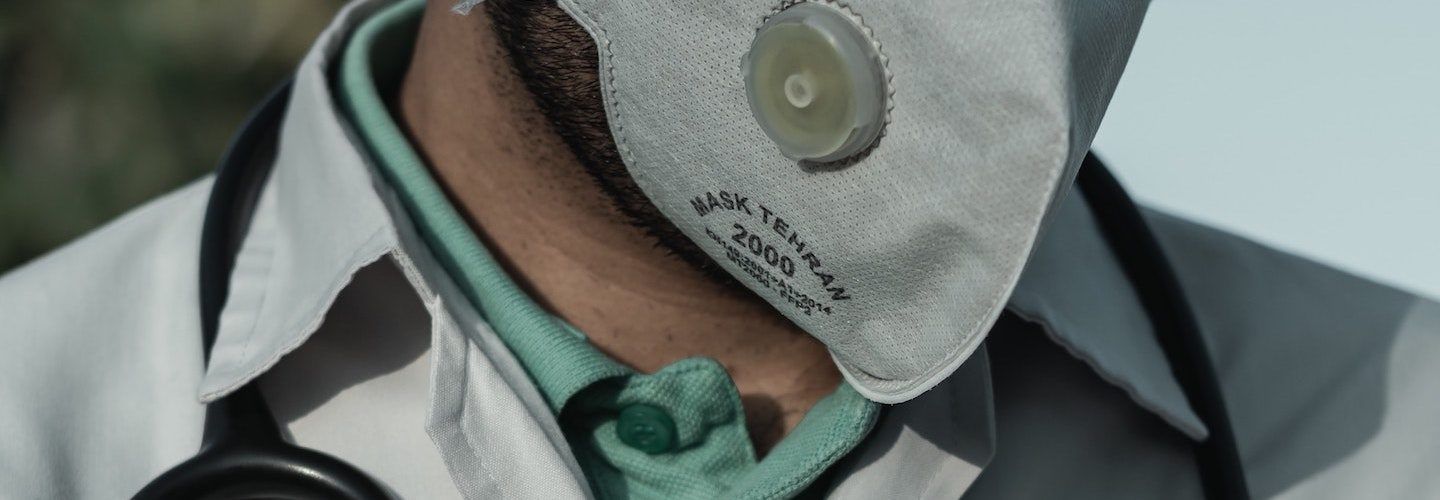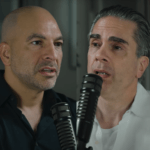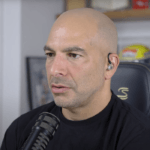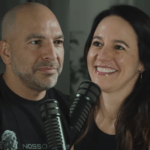In this episode, Michael Osterholm, Director of the Center for Infectious Disease Research and Policy at the University of Minnesota and author of Deadliest Enemy: Our War Against Killer Germs, provides an overview on the COVID-19 pandemic in regards to what has happened to date, what we’ve learned about how the disease spreads, and his optimism and pessimism about what potentially lies ahead. Michael gives his take on the true case fatality rate, why it differs around the world, and which underlying conditions, such as obesity, impact risk of severe illness and death. We also discuss the outlook regarding vaccines, repurposed drugs/antivirals for treatment, and Michael’s growing concern about supply chain limitations with respect to drugs, vaccines, n95 masks, and testing kits.
Subscribe on: APPLE PODCASTS | RSS | GOOGLE | OVERCAST | STITCHER
We discuss:
- Recapping the brief history of COVID-19 and what potentially lies ahead [2:15];
- Some positive news about immunity and reinfection [10:45];
- Case fatality rate—the challenge in finding the true rate, difference by country, and the impact of age, underlying conditions, and obesity [13:00];
- What has to be true for less than 100,000 Americans to die from COVID-19? [24:30];
- How do we best protect healthcare workers? [29:45];
- Concerns about testing capability—reagent shortfall and a supply chain problem [39:30];
- Vaccines and antivirals—The outlook, timing, and challenges [47:45];
- Long term health of survivors of COVID-19 [56:45];
- The impact of comorbidities—Diabetes, obesity, and immunosuppressed patients [59:30];
- Understanding R0 and how the disease spreads [1:01:30];
- The challenge of forecasting with so many unknowns [1:08:00];
- What explains the difference in cases and fatalities in different parts of the world? [1:14:30];
- Repurposed drugs/antivirals being considered for treatment options—any optimism? [1:16:45];
- A parting message from Michael about what lies ahead [1:18:30]; and
- More.
Show Notes
Recapping the brief history of COVID-19 and what potentially lies ahead [2:15]
⇒ Michael’s recent appearance on the Joe Rogan Podcast which might as well be a year ago in terms of this virus epidemic
⇒ “If you don’t know where you are going, any road will get you there.” -Lewis Carroll
Brief history of COVID-19
- Appeared in December 2019 in China
- It’s different that SARS and MERS because…
- Those don’t become becoming highly infectious until the fifth or sixth day of illness whereas COVID-19 can be transmitted before symptoms occur much more like influenza
- And there’s about 5 days from getting the virus to showing symptoms
- These characteristics lead Michael to predict this would be a pandemic in early February
Will it be seasonal or spread year round?
- Unclear, but the other coronaviruses (SARS and MERS) are NOT seasonal
- MERS for example transmitted just fine in 100 degree heat in Abu Dhabi
How long will COVID-19 be around?
- Michael says it’s unlikely to “go away” until 60-70% of the population gets infected
- In the US, we’re unlikely to be able to forcibly lock people down like they did in China (nor should we)
“It won’t stop transmitting in any meaningful way till we get 50 or 60 or 70% of the population infected.”
Pessimistic
- Michael is pessimistic about the fact that we really just don’t have an “easy way out”
- We can’t stay in lock down for while we wait for a vaccine and destroy the economy
- But we also can’t just do nothing which would bring down the healthcare system
“How do we find a way to have those people who are at lowest risk of having serious disease. ..be in our workforce, be more public, and handle the issues? So if we can do that, that’s good news.”
A second wave?
- Until there’s a vaccine, it’s hard to see how this virus doesn’t hit a majority of the US population (60-70%) because once we come out of sheltering it might spread again (like people speculate is happening in China)
- Quick math:
- 300 million people
- 60% infection = 180 mil people get COVID-19
- 20% of those need hospitalization = 36 mil in hospital
- 1.5% of infect end up dying = 2.7 mil deaths
“It will go until it finds enough immune people that shut it down.”
Some positive news about immunity and reinfection [10:45]
This study showed that macaque monkeys could not get reinfected after they recovered from the virus
This suggests that it’s possible that once you get COVID-19, you will be immune from getting or spreading it after you recover
“This study really gave us more hope that there really is durable immunity, at least in the short term . . . I know that if you have short term immunity, oftentimes that bodes well for a long term immunity picture.”
Case fatality rate—the challenge in finding the true rate, difference by country, and the impact of age, underlying conditions, and obesity [13:00]
Lancet paper with update case fatality information from China
- The revised CFR now looks to be 0.66%
- This was down from 1.38% before they added a bunch more people to the denominator that were previously in the unconfirmed bucket
Michael’s response:
- we’re also missing the number people in the numerator
- In other words, there are people dying at home that never get diagnosed
- And this adds people to the numerator
- “The numerator is actually more sensitive in terms of impacting the rate than is the denominator. And so one of the challenges that we’ve had is ‘what is that overall numerator?’ and ‘How many cases were missed?’”
- See Michael’s take on what the real CFR is below …
Underlying conditions and comorbidities
- In China, many males over 65 were dying, but women weren’t
- The difference? Smoking is prevalent in 70% of men and only 2% of women
–Other risk factors:
- Hypertension
- Renal disease
- Obesity may be the highest risk factor for younger people who die
“We’re seeing an increased number of severe illnesses and deaths in people between the ages of 25 and 50…and the risk factor appears to be obesity.”
What is Mike’s estimate of the actual CFR?
- Some people hope the CFR is as low as 0.1-0.5%
- Mike says that’s a pipe dream
- Mike thinks it’s likely to be in the 1.0-2.5% range
–Why so high?
- US has a large population over 65
- And we have a lot of obesity in young people
What has to be true for less than 100,000 Americans to die from COVID-19? [24:30]
We’re currently at about 2,000 deaths in the US
What has to happen for the death total to stay under 100,000?
Two things, says Miks:
1—We have to basically suppress transmission as much as we can
- “which I don’t think is doable [long term]…as a country we can’t sustain that.”
- This would destroy the economy
- Mike’s op ed in the NY Times, he wrote about how this is not a choice between saving lives and costing the economy…it’s a combination of both
2—We have to make sure the supply of critical care supplies and drugs are available
- China makes most of our generic drugs in for hospitals and ICUs
- Mike is concerned that we will have shortage of those things leading to unnecessary death
How do we best protect healthcare workers? [29:45]
- The main thing is we need all healthcare workers supplied with an n95 mask
- There is some confusion that a surgical mask is sufficient (not the case)
- An n95 mask stops aerosols
- But we don’t have nearly enough to match the demand despite 3m trying to ramp up production
“We don’t send our soldiers into war without some kind of protective equipment or without bullets in their guns. . .We send healthcare workers into this viral battle and we’re going to be sending them in without bullets or without protective equipment. And that to me is really sad.”
Ways to get more out of the n95 masks:
1—One…We should start forming wards, large wards where basically we have 18 or 20 patients.
- You never leave the contaminated zone so you never throw away your mask
2—Secondly, can we reuse the n95 somehow?
- Mike and his team is working on a technique to make that possible
One more solution: What can we do to get infected healthcare workers back?
- “I’d like to test as many healthcare workers as I could for antibody and making, having the discussion we just had on the ability to know that somebody’s likely protected”
- Once they are immune they won’t require a mask
Concerns about testing capability—reagent shortfall and a supply chain problem [39:30]
- The US has tested about 800,000 people so far
- For the PCR tests (which look at whether you are currently infected), the test kits are mostly being provided by Roche
“Supply chain, supply chain, supply chain.”
- Mike is very concerned about the supply chain of the test kits and just as importantly, the reagents which are needed to get the results of the test
- China was a big manufacturerAnd now they are obviously dealing with their own issues with the virus
- Plus the whole world needs the tests, not just the US
Abbott tests
- Some good news it Abbot is developing a new COVID-19 test
- But Mike still remains concerned that we will have a shortfall of reagent water
- So we might have plenty of tests but no way to get the results
Vaccines and antivirals—The outlook, timing, and challenges [47:45]
In Peter’s discussion with biotech companies (off the record), nobody seems confident a vaccine will be ready any sooner than 12 months from now
-Mike explains a bit about why it’s so challenging to develop:
- The effectiveness of a vaccine would be the easier part to solve
- What will hold us up is the safety component
Another issue ⇒ the supply chain
- We might have the vaccine ready but not have the capability to meet the demand
Antivirals
- Even more challenging than a vaccine might be creating an antiviral for treatment
- Over the last 60 years, only ~5,000 antiviral drugs that we being approved, only about 90 were approved (and 40 were for HIV)
- This tells us that T cell biology is so robust…T cells are so amazing at what they do that they save us from all these viruses that otherwise we’d be dead from already
- “In other words, if not for the fact that we had a competent immune system that could fight off most viruses, we’d be doomed because our, our hit rate of developing drugs to stop viruses is actually pathetic compared to our ability to stop bacteria.” -Peter Attia
- Mike says, the HIV research can help us
- But… “I worry about the fact that we’ve already made judgements to a certain degree about what works and doesn’t work.”
- The 2 kinds of drugs being explored to tread COVID-19:
- Immunologic modulators (i.e., chloroquine)
- “But if we have people dying from a myocarditis type picture, well that’s a whole different situation and we may actually cause problems using chloroquine.”
Long term health of survivors of COVID-19 [56:45]
Unfortunately, we know little about the possible side effects of having gotten and recovered from COVID-19
For example:
- We don’t understand how much lingering myocarditis is out there.
- We don’t understand how much lingering kidney disease is out there.
- We don’t understand how much lingering lung disease remains in terms of fibrosis or maybe even permanent destruction of a subset of the pneumocytes
Does Mike have any insight on this from his work with SARS and MERS?
- Again, not much research has been done with this health of survivors
- The one good news is that humans do not seem to get reinfected with MERS once they’ve had it even if they are re-exposed to it
The impact of comorbidities—Diabetes, obesity, and immunosuppressed patients [59:30]
- Type 2 diabetes and obesity are both risk factors
- Type 1 diabetes patients also seems to be at higher risk but it’s unclear why that’s the case
What about immunosuppressed people?
The data is all being revealed on this but as of today it does not appear that immunosuppressed people are at higher risk (e.g., HIV patients don’t seem at higher risk)
The data from China and Italy doesn’t show anything that would indicate that immunosuppression puts you at higher risk
Compared to influenza…
- Peter points out that this is another differentiation from influenza which attacks immunosuppressed people
- Another thing… there is pretty compelling evidence now out of studies that were done in China that the kids do get infected at the same rate that the adults do, but they just don’t show clinical signs and symptoms and which is just the opposite with the flu where kids have major symptoms and spread it very easily
Understanding R0 and how the disease spreads [1:01:30]
R0 (aka R naught)
- Mike alluded that average R0 is between 2 and 2.4
- Peter wonders is symptomatic vs asymptomatic would have a different R0 and if we should be thinking about those cases differently
- Mike says they are currently having that debate right now so it’s unclear
Looking at MERS and SARS for answers
- Mike says R0 isn’t really relevant to MERS and SARS and the reason being the existence of “super spreaders”
- In other words, it’s possible that for 10 people who had the virus, 9 of them didn’t give it to anyone, but there would be 1 super spreader who would spread it to multitudes of people
- With the “super spreader” … this is a property of the host, not the virus because it’s the same virus
- “So to say that the R0 in a situation like that, it’s kinda like saying your head’s in the freezer, your feet are in the oven, but on average, your temperature is just right. You know, it doesn’t make sense.”
- So with MERS and SARS, Mike always challenged the relevance of R0
So what about COVID-19?
-With this disease, Mike says we have a “hybrid”
-Example of super spreader event: Choir practice turns fatal. (from the LA Times)
- 60 people in the choir showed up to practice, 45 have gone on to test positive, and 2 have died, 3 more in the hospital
- “Something about that” says Peter
- “We have these events like that and I think that we’ve had more of those than we care to realize. But on the other hand, we also have, I think the ‘regular’ transmission.”
-Transmission could occur even with little to no symptoms:
- The virus found in a throat swab of people showing the very early signs of COVID-19 found that the virus level was 1000x what they see with SARS
- They think it’s possible that the virus could be even higher in the days before the symptoms are showing
- So even if a person isn’t coughing or sneezing, the higher volume of virus in the throat means that the virus could be spread just by breathing and pushing out aerosols
-Understanding aerosols:
- The next time in your house and sunlight is peering through a window and you see all that dust floating in the air and you think, ‘Oh, my house is dusty., those are aerosols. That’s just from us talking. That’s from us breathing. That’s what goes on in your house.
- The second thing is next time you’re in a shopping center and you are in a department store and you’re three aisles away from the perfume section but you can still smell it… that’s an aerosol.
“The breathing and just the talking would put [the virus] out there.”
-”Presymptomatic” instead of asymptomatic
- we kind of call this presymptomatic
- meaning that they’re going to get sick
- but they may be infectious beforehand they are sick
–What about truly asymptomatic people?
- Mike says he’s been looking at PCR and culture data for truly asymptomatic people in China data…
- “they were pretty loaded, too” says Mike but he’s not sure how much they are driving the outbreak
“How much [asymptomatic people] are driving the outbreak, I don’t know, but I think we can’t ignore that they have to be there. And I do believe we have SARS-like super spreader events just like with the choir event. But there’s a lot of just efficient transmission.”
The challenge of forecasting with so many unknowns [1:08:00]
- Forecasting would be great to know in order know where we need to allocate resources
- I.e., which 5 cities after NYC will need the most help
- But the models are so challenging to put together
- The models are inevitably wrong because we don’t know the simplest things that the model is incredibly sensitive to like R0
- “We don’t know what the probability distribution looks like of these things.”
What does Mike think we should be doing here?
- “I ascribe very much to the fact that all models are wrong. Some just provide helpful information.”
- In the 2014/2015 Ebola outbreak, the CDC model said the cases could reach 1 million, but it only ended up being 20,000
- The variability in the output of a model is so huge because we don’t know some of the variables
- So it’s incredibly challenging
- On the other hand, you can theoretically say without knowing everything things like:
- If you are able to suppress 85 or 90% of the transmission events, you can have this happen.
- Or if you do this, you can have that happen.
- But it can’t tell you that’s what it’s going to be. It can just tell you within the framework of what might it look like.
Mike on his predictions so far:
- “We were right on with this thing all along to this point, even to picking hotspots.”
- “But now we can’t … because it’s beyond the scope of our experience.”
“I can tell you, I can paint the whole United States, we have a hundred percent chance to have a COVID-19 problem. But I can’t tell you exactly much more than that right now.”
What explains the difference in cases and fatalities in different parts of the world? [1:14:30]
- Globally, the communication has not be great to this point
- China doesn’t seem to reveal all the information
- Right now, for example, China isn’t saying it publicly but it appears that are closing movie theaters again and potential dealing with more spreading since they removed their strict lock down procedures
What might explain the variations in cases and fatality rates in different parts of the world?
- Each country is fighting for the same supplies that are critical and in shortage so the lower income countries will likely not be able to get the same stuff
- However, lower income countries will have less older people with underlying issues (who are the most susceptible to die from this) simply because of the fact that those people have already died in the country since the country doesn’t have the healthcare that we have in the US, for example
- This implication is that the lower income country may have less fatality rate because of that
- Obesity and age
- The countries will more obesity in the younger population may see an uptick
- The countries with older populations will see an increase
Comparing Italy and Spain to Germany
- Italy and Spain are more similar and Germany seems better
- Mike says the difference in results is largely just artificial
- He says that most parts of the world will end up in a similar results when we look back 2 or 3 years from now
“I hate to say this, but every week is like a snapshot. It’s not the whole movie. And if we could play the whole movie out for the next two to three years, I think there’ll be a lot more similar kinds of pictures that will over time bear that out. That where the risk factors were for comorbidity, associated severe disease, we’re going to see higher case fatality rates. When you age adjust and when you adjust on risk factors, I don’t think there’s a lot of difference here that we’re going to see around the world.”
Repurposed drugs/antivirals being considered for treatment options—any optimism? [1:16:45]
Peter asks Mike… “Is there any of the sort of repurposed drugs that are currently being thrown around in non RCT manners that you have any optimism around?”
- Some examples: Remdesivir, Camostate, Hydroxychloroquine, etc.
- There was a study that was published out of France looking at hydroxychloroquine showing promise
- But studies like these don’t have the luxury of being randomly controlled so it’s hard to take much from them
- Mike admits that this is not his expertise but that he feels optimistic
“I do believe we’re going to have much more information on therapies much sooner than vaccines and that could be really important.”
A parting message from Michael about what lies ahead [1:18:30]
First, this is serious: “This is real and more people are going to know somebody in the next couple of weeks that are going to be seriously ill or die”
Secondly, it’s going to be okay: “we’re going to get through this”

Michael Osterholm, Ph.D, MPH
Dr. Osterholm is Regents Professor, McKnight Presidential Endowed Chair in Public Health, the director of the Center for Infectious Disease Research and Policy (CIDRAP), Distinguished Teaching Professor in the Division of Environmental Health Sciences, School of Public Health, a professor in the Technological Leadership Institute, College of Science and Engineering, and an adjunct professor in the Medical School, all at the University of Minnesota. He is also a member of the National Academy of Medicine (NAM) and the Council of Foreign Relations. In June 2005 Dr. Osterholm was appointed by Michael Leavitt, Secretary of the Department of Health and Human Services (HHS), to the newly established National Science Advisory Board on Biosecurity. In July 2008, he was named to the University of Minnesota Academic Health Center’s Academy of Excellence in Health Research. In October 2008, he was appointed to the World Economic Forum Working Group on Pandemics. [unm.edu]
Dr. Osterholm is the author of Deadliest Enemy: Our War Against Killer Germs,






MERS* (https://www.cdc.gov/coronavirus/mers/index.html)
What prophylactics can the average person use?
China, S. Korea, and a hospital system in NY,( https://nypost.com/2020/03/24/new-york-hospitals-treating-coronavirus-patients-with-vitamin-c/ ), are using vitamin C with positive results. Both orally and intravenously. Dr. Frederick Klenner proved back in the 1940’s that
vitamin C kills virus and you will find Andrew Saul is probably the most visible expert on vitamin C. Also I read where COVID19 symptoms resemble a zinc deficiency. I know that comorbidity is caused by bad diet so therefore a fast of 3 or more days followed by a proper nutritional diet along with vitamin and mineral supplementation should lead to a much better outcome for those afflicted. I’ve noticed the vitamin C sections are hard hit but not depleted. I am 76 and I have considered getting the virus now while hunkered down rather than at a later date, like next year, when I may not be quite prepared for it. I had a flu shot in the mid 70’s and came down with the flu. That was the last time I had the flu. I’ve been studying health and nutrition for the last 40 years but still eat my organic meat rare. (Except pork)
I also have a question about Vitamin C. Another newsletter says that research on Vitamin C is being censored. I would like to hear what Dr Attia and his guest experts think.
Can you ask someone about MTHFR-1 as up to 40% of the population has this gene,but not tested.It cause the following to be low,especially the A1298C Allele: ATP,Enzymes,Immune Function.It also causes premature aging,drug sensitivity,enlarged hearts,Sepsis,low Ejection Fraction,low Oxygen Sat.,Chronic Fatigue,Hemolytic Anemia,Atypical Anemia,very low viral resistance causing Mono,Whooping Cough,Measles,Chickenpox(and all Poxes and Herpes Viruses),Singles,sensitivity to drugs,allergens,andAnaphylaxix,Obesity,NAFLD,Diabetes.My stidies indicated Hydroxyquine should NOT be used on MTHFR-1 people as they are naturally resistant to death from RBC infection(this virus invades RBC’s in order to get nutrients to multiply).Most importantly,low Mitochondrial Oxygen generation results from damge caused by this virus and Melatonin is the natural ant-oxidant for Mitochondria.So,Seniors and at risk should bring their oxygen up to at least 99% using Melatonin 1-4 times a day, as needed based on Pulse Pressure,and all patients with symptoms.Hospitalized patients need continuous Melatonin IV drip-this should relieve Ventilator shortage,reduce symptoms and morbidity.Low acidfoods should be taken-avoid orange and other acid juices as they promite COVID-19 invasion of RBC’s.My thoughts to date.I am an Engineer and translate University PubMed Research into diagnoses,and treatments.I am 80-have MTHFR-1 ,and have survived many Viruses and Genetic Cancer caused by immune dysfunction.Unfortunately,MTHFR-1 is not routinely tested,but is the cause of most chronic conditions,including Obesity,Viral Infections,Sepsis,Chronic Fatigue,and more.Women are far more susceptible by 20 years on the aging/disease curve.Fred
Stick to engineering, Fred. You have given so much mis/dysinformation that it’s hard to know where to begin. An example: The virus does not invade RBC’s for nutrition. There are no replicative processes in RBC’s. The virus won’t be replicated and thus will disappear. I’m a Physician and and engineer. PubMed gives basic research info. You can’t extrapolate that into the real world. If you have MTHFR problems, treat them. But throwing around pseudoscience for others to be damaged by is irresponsible.
A very helpful and interesting interview. Further great insight into this pandemic.
I thought you may want to review this piece of transcript.
“Or maybe even permanent destruction of a subset of the new myocytes“
Peter,
Perhaps your best podcast. I’ve listened to most of them. Very informative but daunting. Your guest gave you a well deserved compliment at the end.
So, if I understood this right, testing is the way to find out where we stand in statistical terms, but testing will not save us in this case because of constrained supply chains. The U.S. simply cannot deploy the same strategy that S. Korea did. It is as if we are flying blind. My roommate tested positive today (on a test given 4 days ago — very slow results), but when I asked to be tested, I was turned down and told they didn’t have enough test kits.
Please take a look at http://www.covaxx.com/why-covaxx for a serum ELISA test kit.
They also have a vaccine ready for human studies based on their SARS-1 vaccine. Worth interviewing their leadership.
Thank you for great information and no BS. I keep hearing about high dose IV vitamin C as a possible therapy. You have not brought this up in any of your discussions. Is this a viable option considering Rx is in short supply?
Hey Peter,
Two things:
1. The choice between health and the economy is probably a false dichotomy. Look at the economic indicators in countries that have not ordered lock-downs, such as Japan. They are crashing too. In addition, I did some research on the history of epidemics and found that they almost invariably crash the economy, regardless of response. It may be the case that ending the lock-downs can only improve the economy by a small amount, while increasing the health risks substantially
2. Your researchers have probably found this, but if not, you may find this protease inhibitor compelling:
https://www.dpz.eu/en/home/single-view/news/die-vermehrung-von-sars-coronavirus-2-im-menschen-verhindern.html
Wow, intriguing Tony! I would be interested to hear from the lead researcher on that study on an episode of The Drive.
https://www.researchgate.net/profile/Markus_Hoffmann5
I think I had Covid-19 but I did not have a fever. I heard from a neighbor that her friend who was tested had the exact symptoms that I had without a fever. I would like to know from a titer if I actually had it. What are the chances of getting this done? My symptoms were sore throat, dry cough and malaise.
Great podcast. Please add link to Dr. Osterholm’s (et al) n95 mask recycling protocol paper when it becomes available.
You blew Dr. Osterholm away with your preparedness, thoughtfulness, questions and insights. He was like, “You bet. I’ll for sure come back!”
Thank you, Peter!
Very informative
Great discussion. One comment I think would help the average person understand the seriousness of this virus is if the CFR gets reported separately for over 50 and under 50 category. Ideally every 10 year group would be better, but at least we can get people to understand why Germany (primary breakout among young skiers) and Korea (young church members) are in general much lower. I see so many people pointing to them and hoping and praying it could be that low. You can’t just use the average age as an indicator. An average does not indicate the true picture of how many are in each age group. Under 50 CFR is likely well under 1, and over 50 is likely significantly over 1 in the high single digits and double digit % in some countries.
It seems to me we need to be throwing as much data as possible into machine learning in the absence of good modeling. If all the actors that matter all the have the punched-in-the-face syndrome, we will have to let the data save us from ourselves. Peter, can you hook up with Dr. Eric Topol and others to explore this possibility?
I wonder, what the risk factors (or even causes) for COVID-19 to become deadly are. Actually, If I look e.g. at the data from Italy ( https://www.epicentro.iss.it/coronavirus/bollettino/Report-COVID-2019_20_marzo_eng.pdf ) the reported comorbidities are almost all of them linked to *sugar consumption* (not sure about COPD and atrial fibrilation, though). Also there are several mechanisms which link sugar intake to dysregulated immune system. So, what if the biggest risk factor of SARS-2 being deadly is actually the sugar intake? What if sugar (anything containing fructose) was banned NOW? Would it perhaps considerably lower the number of deaths in the current outbreak or even bring a sort of relief to the health system?
(And I really wonder, why nobody is doing any research on this even if the link to sugar/fructose is SO OBVIOUS. Why is no one reporting insulin levels or ALT with young people dying on COVID-19, for example?)
When I pushed play and saw this podcast was over an hour, I never thought I’d make it to the end. Instead, I was riveted. Though the conversation reached scary scenarios, it was a joy to listen to the two of you. Thank you.
Thanks Peter and Michael for a really worthwhile, informative conversation. The best information and derp understanding of this vital topic I’ve heard. Somehow it managed to be both reassuring and concerning at the same time. So much of what you clarified just isn’t making into the public realm: I’m thinking of reagents for testing, masks shortfall, looming lack of basic medicines and antibiotics. Thank you both again, and I’d love if this could be a regular conversation for the duration.
Wow the best interview I’ve heard so far. Dr Michael Ohelstrem is my go to expert on any covid 19 information.
I have a question: what makes obesity such a risk factor? The fact that they have underlying health conditions like possibly diabetes and high cholesterol? When I think of very obesed people usually they do not exercize, they have low VO2 levels. So they probably have weak lungs, it’s hard for them to do cardio. So those who have strong lungs from exercise do you think they will do better with the virus???? Can you PLEASE ask Michael Ohelstrem this question? I’m dying to know…
Fabian Sandoval
Thank you! One of the best podcast I ever listened to.